Comparison of hybrids or what expects the owners of the Romanian Meze headphones for 84 990 and 239 990 rubles
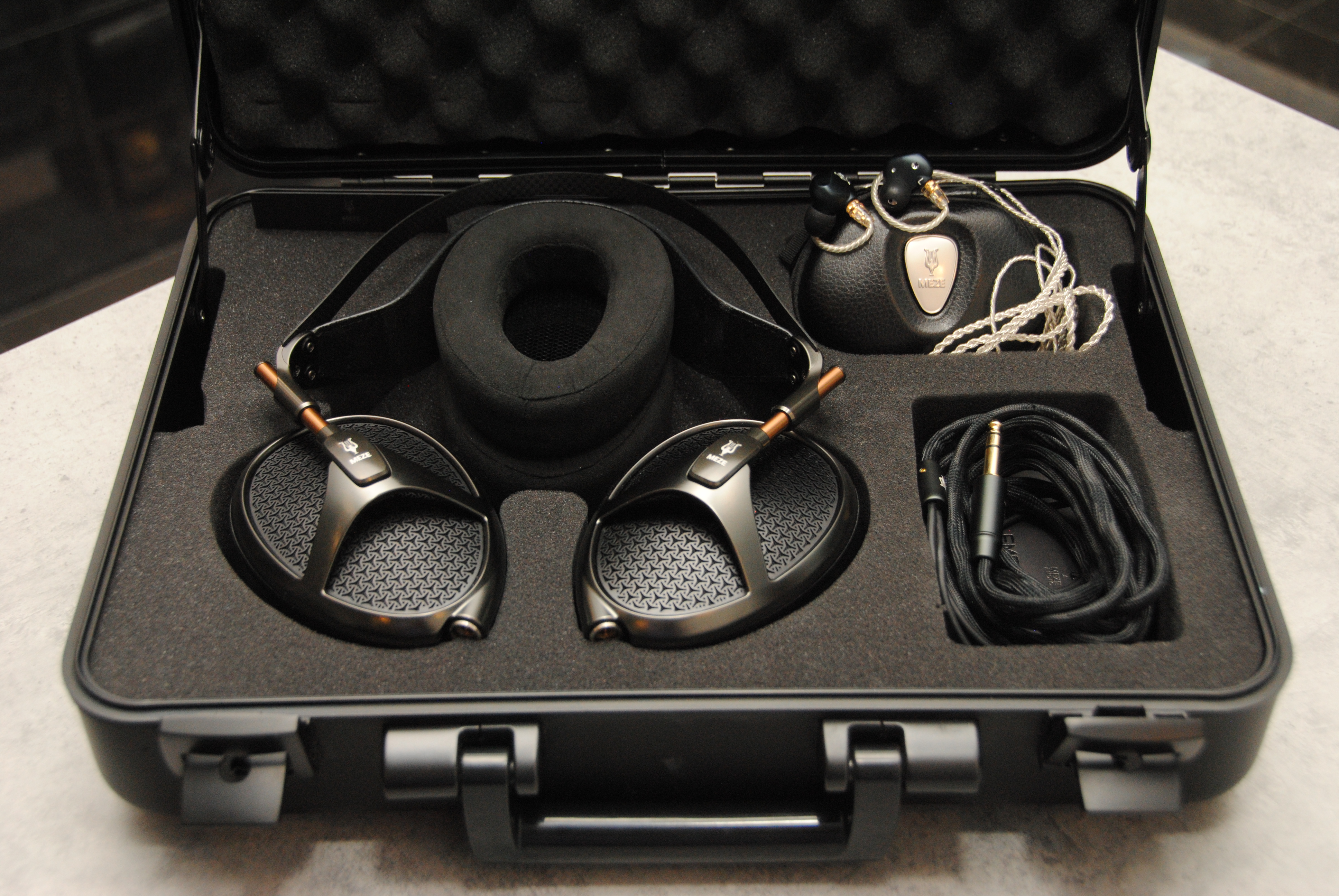
I emphasize that we will consider the flagships for which the Romanians want "very much money." In this case, “many” are the amounts indicated in the heading. I’ll ask you to be tolerant of people who acquire extremely expensive audio electronics in search of “divine sound”. Remember that to a large extent it is these people who pay for the development of the industry. The industry, quite naturally, seeks to satisfy their desires, often not technological, far-reaching rational approaches and natural compromises, and sometimes contrary to generally accepted concepts of common sense. Although in our case, with common sense, everything is just fine, unless of course astronomical prices are not taken into account. So, under the cut, compare Meze Empyrean and Meze Rai Penta
Empyrean – iso-ortho-dynamic hybrid
Headphones are full-sized, open-type with a hybrid iso-ortho-dynamic emitter of an original design. Today the so-called Planar headphones are experiencing a rebirth, which is associated with low non-linear distortions and flat frequency response, which are provided by this non-trivial type of radiation.
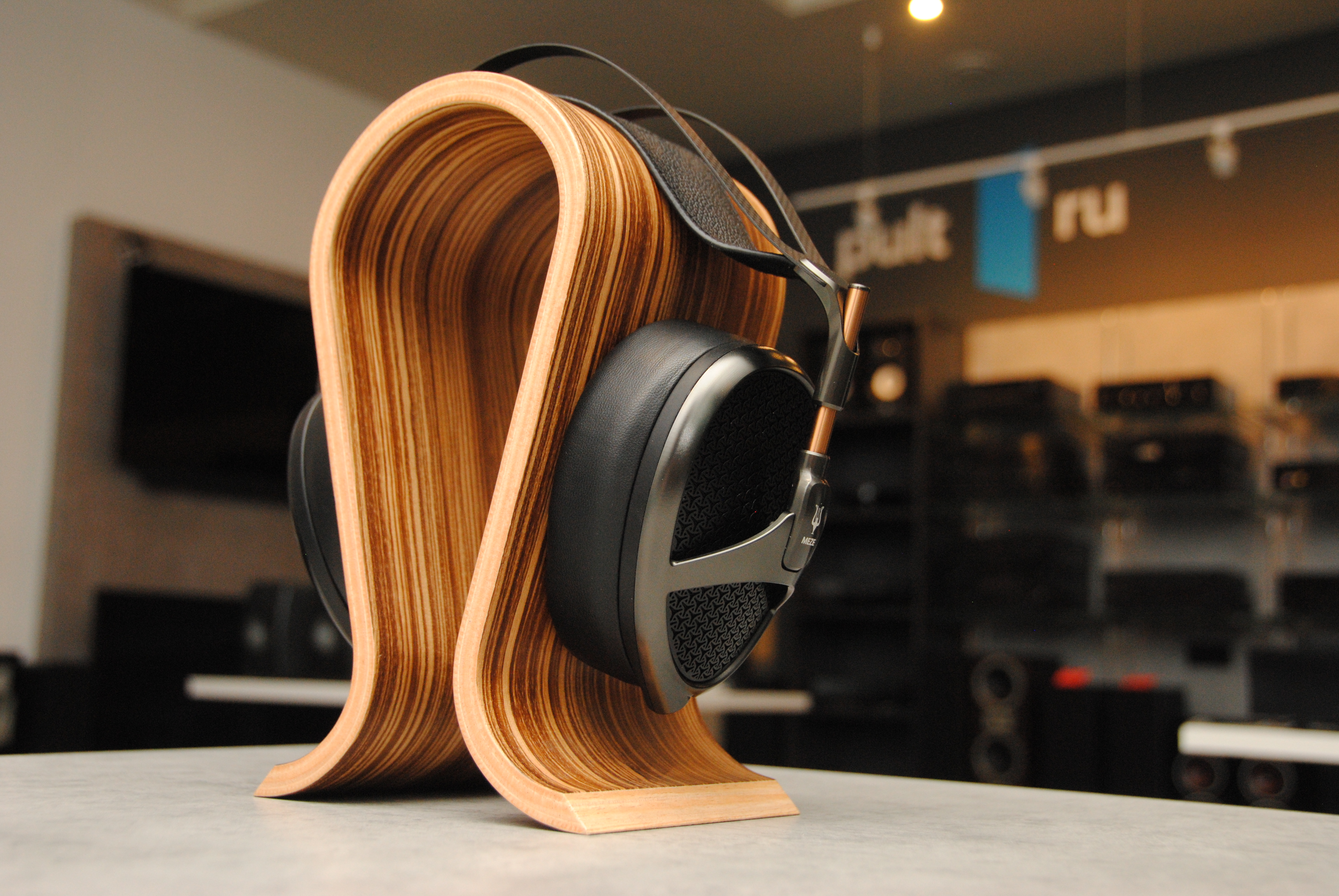
A bit about isodynamic emitters
The essence of the isodynamic principle is that instead of the classic coil connected to the diffuser, the ultra-thin membrane is actually a coil, due to the conductive tracks deposited on it. This diffuser-coil interacts with a magnetic stator, which is made in the form of a lattice. The vanishingly small thickness of the diffuser, as well as uniformity and a large radiation area, make the isodynamic drivers almost ideal for headphones. The only reason most headphones use speakers today is technology.
Empyrean Emitter
The main feature of the headphones are MZ3 isodynamic emitters. They are produced by the Ukrainian company Rinaro from Lviv and are exclusively supplied by Meze.
The characteristics of the emitter are as follows:
- Geometric shape – oval;
- Size – 102 mm x 73 mm;
- Weight: 82 g;
- Case material: metal, fiberglass, ABS;
- Aperture Type: Rinaro-Isoplanar;
- Radiation area: 4650 mm2;
- Aperture mass: 0.16 g;
- Acoustic mass: 10.7 kg / m4;
- Low Frequency Threshold: 4 Hz;
- RF threshold: 110,000 Hz;
- Size: 75 mm x 49 mm;
- Magnetic flux: 0.35 T.
The emitters are positioned by the manufacturer as hybrid. Despite one film diffuser and the absence of anything as an electric frequency filter, the presence of an “isodynamic hybrid array” as an emitter allows us to achieve the effect of frequency separation.

According to the information on the site, a mechanical filter is implemented in the speakers, due to the difference in the pattern of the conductor on the membrane. The lower part has an isodynamic pattern (mainly radiates in the LF and MF ranges), and the upper part is an orthodynamic and is responsible for RF radiation.
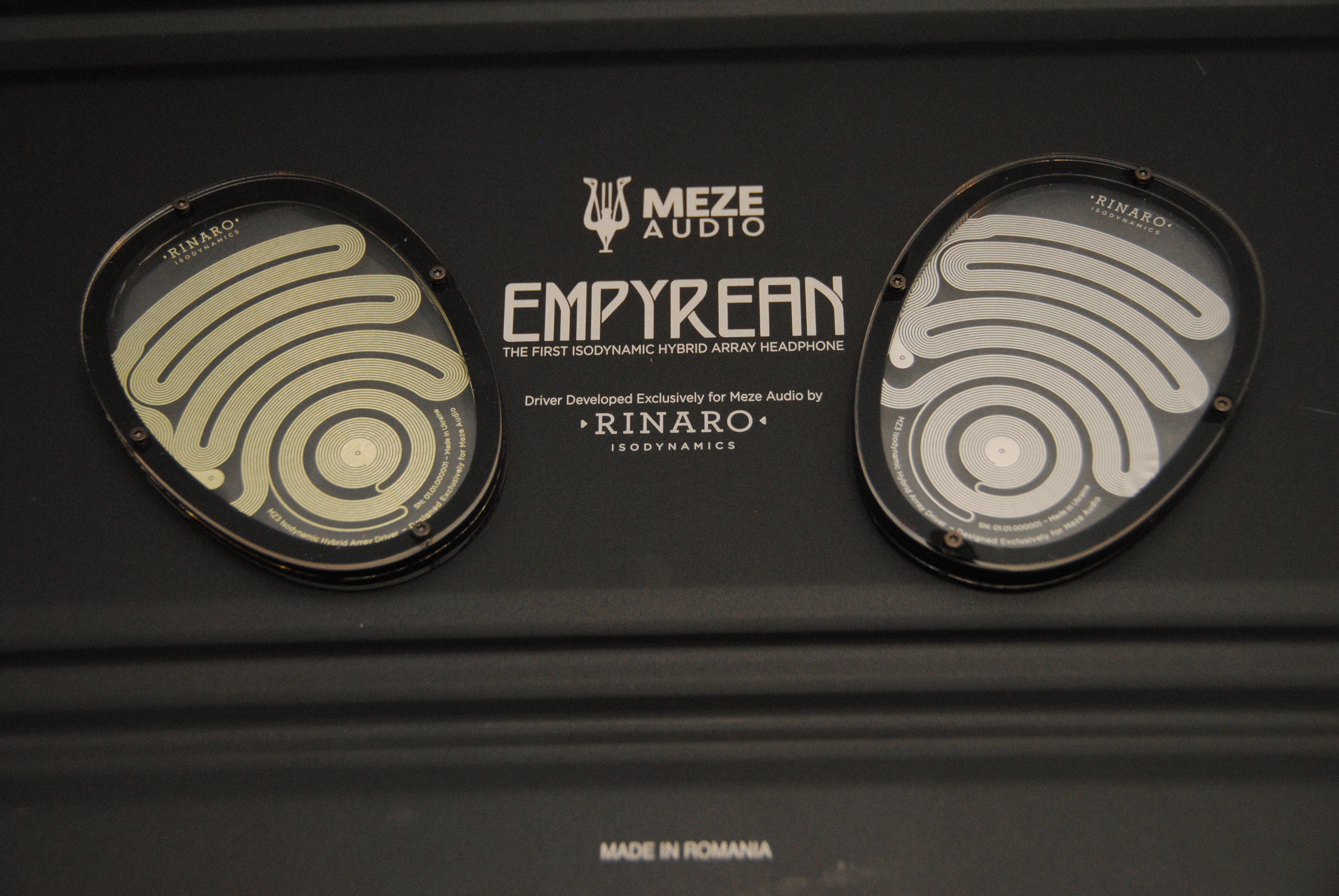
Film diffuser is three times lighter than standard office paper. It is pulled over a plastic frame reinforced with fiberglass. At the same time, neodymium magnets were used in the stators, which allows one to achieve an amplitude that provides monstrous sound pressure comparable to the SPL half a meter from the horn's bell when flying Valkyrie Richard Wagner in the most energetic part of the work, i.e. 130 dB In order to protect the audience, the manual even provides for a special part.
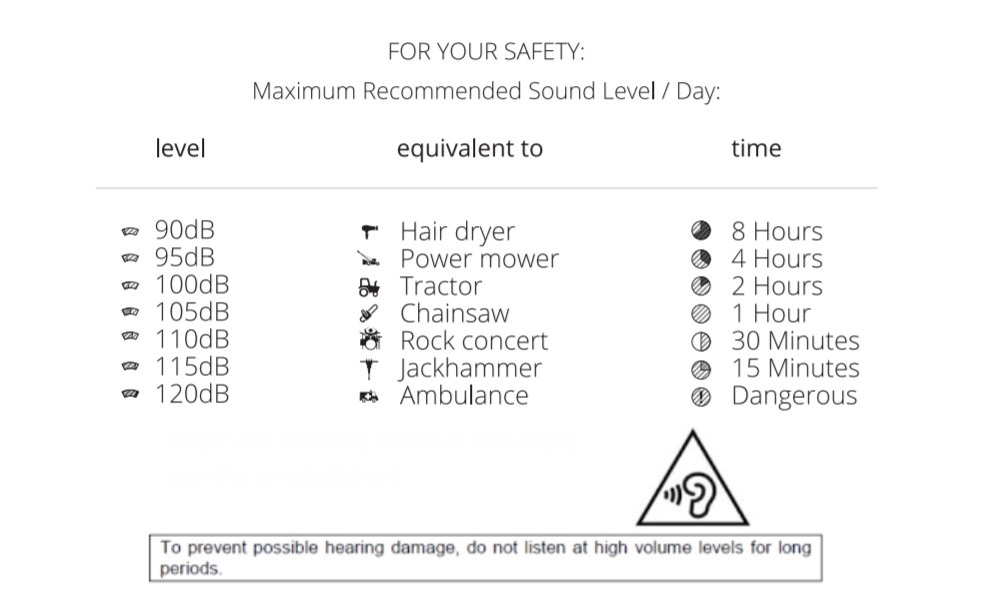
It is also stated that the egg-shaped shape of the emitter also has not only aesthetic, but also functional purpose, as it supposedly has a minimum area in comparison with an ellipse, circle and rectangles. And that it is necessary for the rational arrangement of magnets without increasing the mass.

I’m neither ready to refute nor confirm this, due to the fact that for the first time I hear about the interdependence of the shape of the body (emitter) and the effectiveness of the placement of magnets (I hope that competent people who have ever developed headphones will shed light on the effective arrangement of magnets in an egg-shaped form in the comments) .
Ergonomics, design, equipment Empyrean
Meze Empyrean come in a tough aluminum case. This is the first thing that attracts attention. Foam inserts are installed in the case, which protect the headphones from mechanical damage. At a cost of 239,990 rubles, the manufacturer could certainly fork out for velvet, but this is the last thing that worries people who are in a frantic search for “divine sound”.
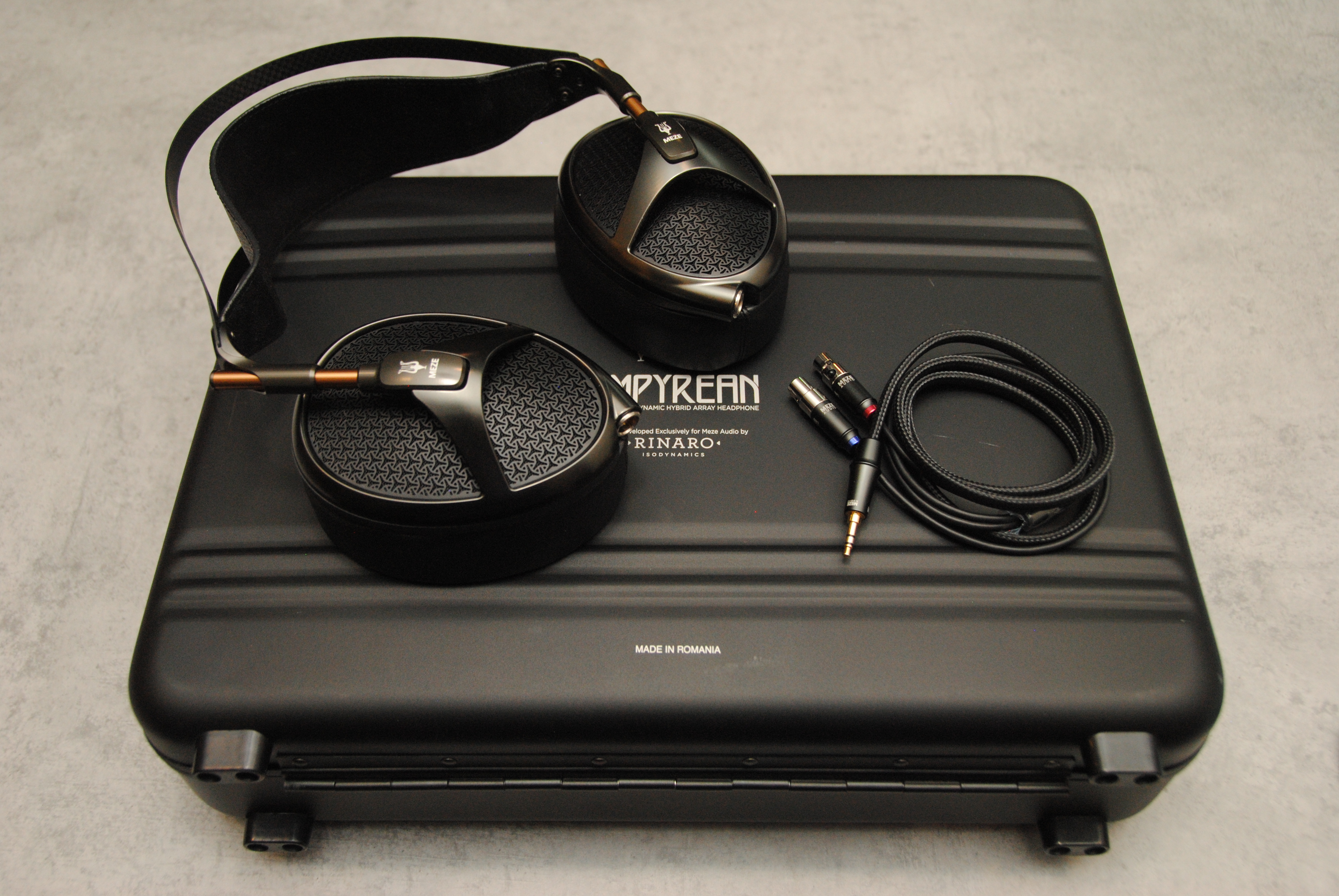
The aluminum earphone cups are made of openwork, which, on the one hand, is functionally important for an open-type acoustic design, and on the other hand, it is attractively aesthetically pleasing. In the video, you can observe how the punching occurs using a programmed milling machine. The manufacturer writes that their milling takes about a day.

The headband is made of carbon fiber and leather. Ergonomics are designed to minimize pressure on the head. This can be easily understood when you wear headphones for more than two hours and do not feel discomfort. It should be noted that discomfort should still arise, given that the mass of the device is not the smallest, about 430 grams. Replaceable ear pads (two pairs of genuine leather and Alcantara are provided in the kit) are attached using magnets.
Empyrean Sensations
When audiophiles obsequiously pronounce the phrase “real high end”, it is just such a device. Outwardly screaming about her not a small cost, while not pretentious. Some time ago I spent a long time in the headphones and I know what ears feel after 3 to 4 hours in the “ears” from manufacturers who do not know the word ergonomics, and also how good it is to use something with decent ergonomics from Sennheiser or AKG. Knowing the mass of the headphones, I thought that everything would be bad, but I was mistaken. Half a kilogram was almost not felt on my head, my ears were not sweating, and when the music appeared, for a moment I forgot about the existence of headphones.
About sound – I did not lazily take measurements, but I can note that these headphones transmit the entire spectrum of frequencies that my aging ears are able to hear. Subjectively, the frequency response is felt to be slightly uneven, with emphasis on medium low and high, with nothing terribly cutting ears. The female choir of the Moscow State Capella sounded almost as pure as electrostats from STAX, and there was no desire to tighten the bottoms with an equalizer, which happens with electrostatic monitors.
Characteristics of Empyrean
In order not to be an unfounded subjectivist, I quote the passport characteristics declared by the manufacturer (I have no reason not to trust what is written):
- Minimum frequency, Hz: 4
- Maximum frequency, Hz: 110,000
- Resistance, Ohm: 31.6
- Sensitivity, dB / W / m: 100
- THD: less than 0.1% (over the entire frequency range)
This material is taken from the page: www.pult.ru/product/naushniki-meze-empyrean-black-copper/harakteristiki#ixzz69EZ1xB7x
Rai Penta Design Features
So, these headphones are a bit more traditional. These are classic hybrids, which are numerous both in the pathos of High End manufacturers and among headphones for the mass user.

Emitters
For the bass range meets the classic speaker. Bass, with a light diffuser and high sound pressure. The speaker's acoustic design is individual – it is a separate camera with a kind of miniature bass reflex. Mid and high frequencies are provided by dual reinforcing emitters. All three ranges are equipped with independent soundguides of a pre-calculated length, which minimizes possible phase distortion. I consider this latter circumstance to be especially valuable and, describing the subjective impressions of listening, I will explain why.
Ergonomics, design, equipment
The headphones come in a small neat box where they themselves lie, a detachable cable with MMCX (micro-miniature coaxial) connectors, woven from silver-plated stranded copper in transparent insulation, a hard case with a zipper, ear pads of various sizes and shapes, a cleaning device and adapters for big jack and for the plane. It is optionally possible to complete with balanced cables of 2.5 or 4.4 mm.

The unusual shape of the case is apparently due to ergonomic tasks and acoustic design features. The body is made of aluminum alloy.
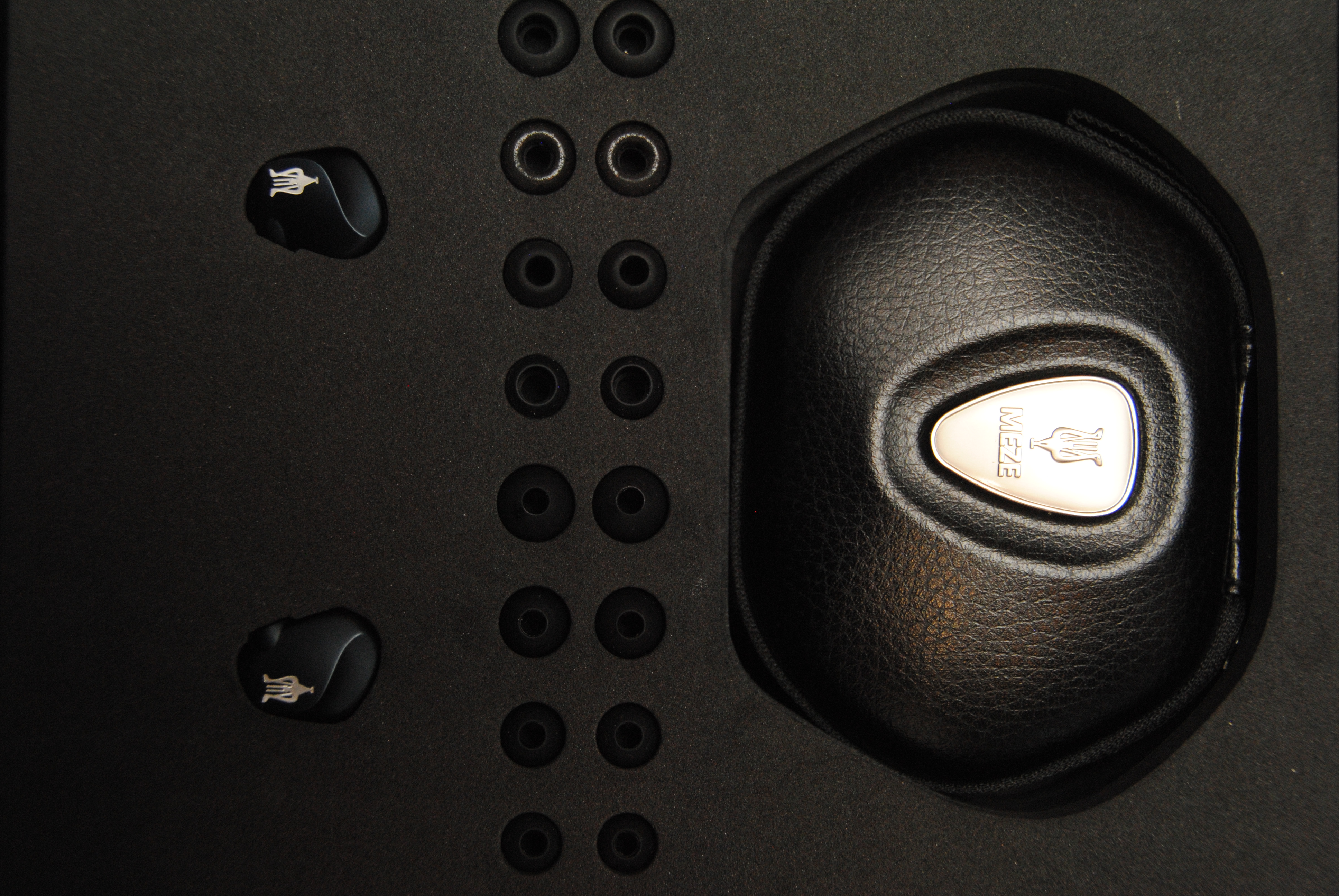
The subjective impression of Rai Penta
So, the main impression is the capabilities of full-size headphones in the in-channel form factor. Very powerful, fairly bass, but without significant distortions in the frequency response. The balance of frequencies reminded Empyrean. If we talk about ergonomics, then it is quite ordinary, it’s convenient in the headphones, but I can’t say that I experienced a rapture comparable to their cost. Listening to them reminded me of the sensations of stage intra-channel monitors with standard silicone ear pads.
The phaseline of the sound guides mentioned above determined a significant feature in the sound – a very precise arrangement of the apparent sound sources, with an external (i.e. not inside the head, but phantomly outside) stereo panorama. If you really want to, you can even believe that there are live tools nearby. The ceiling volume is also monstrous, especially given the in-channel form factor.
Features Rai Penta
- Type of emitter: reinforcing + dynamic;
- Minimum frequency, Hz: 4;
- Maximum frequency, Hz: 45000;
- Resistance, Ohm: 20;
- Sensitivity, dB / W / m: 110;
- Maximum power, mW: 30;
- Removable cable: yes;
- Wired / wireless: wired;
- Microphone: no;
- Built-in battery: no.
In conclusion
The form factor always determines the purpose, each of the models perfectly copes with its task. Subjective tests passed and left the impression that the development of devices has been working for more than one year. I would call the fidelity of the reproduction of models excessive (with the exception of some accents in the frequency response, which are usually called "proprietary sound"). Ergonomics are also on top, while the Rai Penta is not suitable for long listening in the studio or at home, and Empyrean is naturally not suitable for the street.
To summarize, with these headphones everything is very good, which is expected at a similar cost. When it comes to such amounts, it is difficult to talk about whether the product is worth the money that is being asked for. But people who are more important to not even hear, but just know that their headphones are impeccable, such prices are considered justified. Speaking frankly of the fact that Meze is producing headphones for such, frankly, irresponsible price, I was determined to break their arrogant dreams of enriching the British flag with a revealing critical review. But to find fault with something turned out to be really difficult. This does not mean that I suddenly began to consider such a cost as the norm of life, but I completely admit that for someone they can “cost their money” and the “prestigious price” is justified by the acquired benefits.
Our traditional advertising:
Our catalog contains the headphones described in the article (Empyrean, Rai Penta), and here you can easily find speakers, amplifiers, sound bars and other useful devices both at “prestigious” and “affordable” prices. The assortment includes warm lamps, vinyl and other joys for lovers of technoarchaics. We did not forget about cold transistors and completely frosty digital devices.




